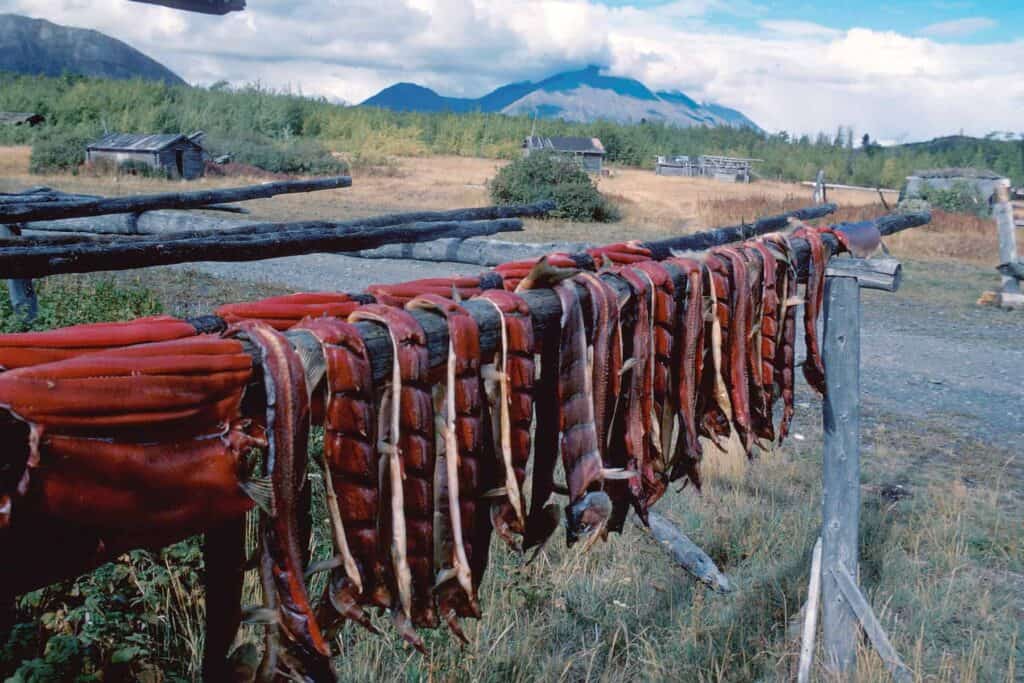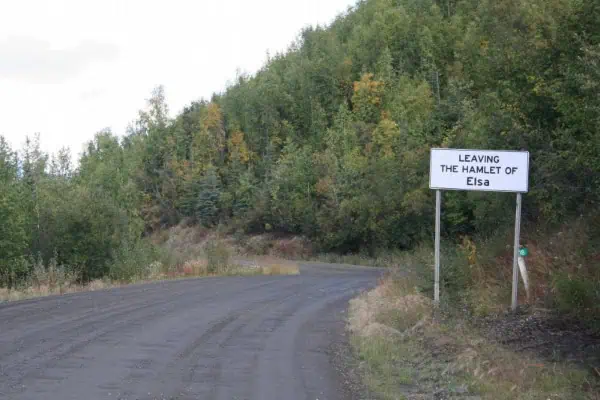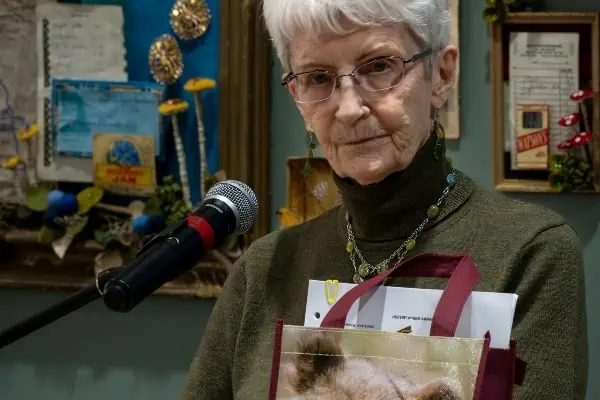
In May of 2005, I was talking with a gentleman of the Kwanlin Dün First Nation (KDFN) who was describing an encounter he and his brother had with a sasquatch, while at their aunt’s fish camp on the Yukon River. This camp is located a short distance upstream from Yukon Crossing, a former roadhouse during the days of the paddlewheeler, along the famous Dawson Overland Trail between Whitehorse and Dawson City, which operated from 1902 to 1955.
The gentleman had been at his aunt’s fish camp for about a week, helping with the chores and such, at around 6 p.m. in mid-July of 1990, when he decided to take an ATV for a ride, along with his younger brother, who was about 14 at the time (the fella I was talking with was 16 years of age then).
Following a few trails, they ended up at a small gravel pit and stopped to smoke a cigarette they had “borrowed” from another member of the group. Then, out of the bush, some 25 metres away, came what they thought was a black bear. But as it got closer to them, they realized it was not a bear at all. This thing was walking on two legs, had to be a couple of metres high, was covered with thick black hair and was very muscular and huge, according to the witness.
They were in shock, not really knowing what to do. The bipedal, ambulating entity was about 10 metres away, by now, and coming towards them. This is when they decided to head back to the fish camp.
Arriving at the fish camp, they told their father of the encounter with this strange creature, explaining in as much detail as they could remember while still in shock. The father told them that it was a bushman (a sasquatch) and not to be afraid as they were not mean, in his opinion.
Later on that evening, as it was getting darker, the family could see movement and hear noises in the nearby bush. Something was walking about, yet they could not clearly see anything. The two dogs they had with them simply went crazy, said the witness and were trying to hide until they finally got them into the cabin.
At around 11 that night, most of the family went into the cabin and tried to sleep. Two men stayed outside, sort of guarding the place, with rifles close by, while feeding the campfire and being ready for any eventuality.
The movements continued well into the night, then at times around 2 a.m. when things quieted down and no more movements could be observed or heard. Had the noisemakers, the bushmen, gone away? Who knows.
Figuring it was now safe, the two gentlemen decided to go into the cabin, as well, and while one would stay up watching, the other one would sleep, switching every hour or so till morning.
When morning came, the two gentlemen went out and looked around, rifles still in hand. All seemed quiet—no movement, no sounds. They ventured closer to the smokehouse and noticed that a few salmon had gone missing. A few minutes later, one of the men was descending closer to the water’s edge where he noticed a pile of fish bones beside the trail. It was neatly stacked.
Now let me ask: Who or what stacked the fish bones? We know that bears, while eating fish, will simply let the bones fall to the ground, wherever they so happen to fall. But to neatly stack such bones, in such a fashion, would show some sort of intelligence on the part of the fish consumer, in my opinion. Why was it done in such a way? Were they trying to convey a message? A “thank-you note,” perhaps?
As the gentleman explained to me, during the interview, the viewpoint of First Nation Peoples, as they know that sasquatch must eat—must feed—is that they accept the fact that, on occasions, food would be taken from food caches, fish-camp smokehouses and other places where it can be easily accessed. That’s life.
I visited the location in late summer of 2005 and would usually stop by when travelling around those parts, but I have not found any signs of activity that may be related to their visitor—yet.




